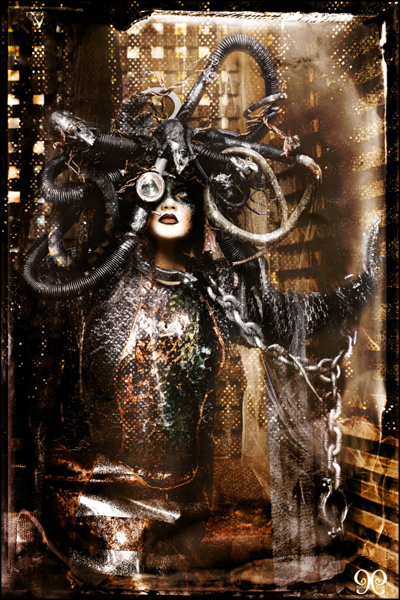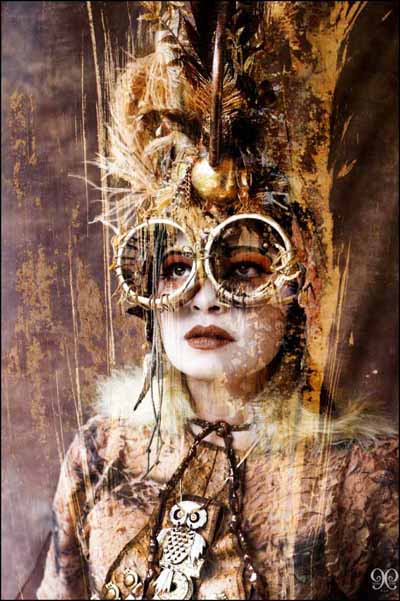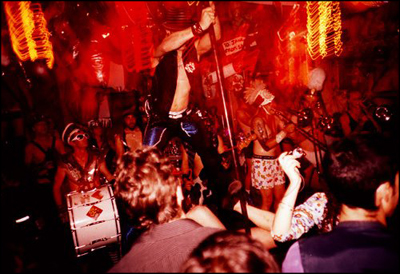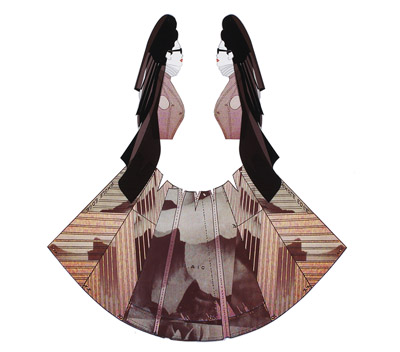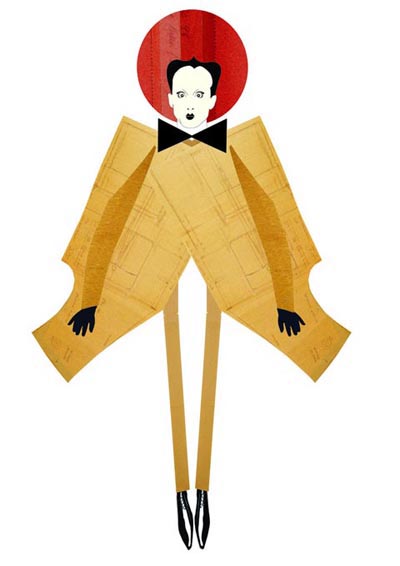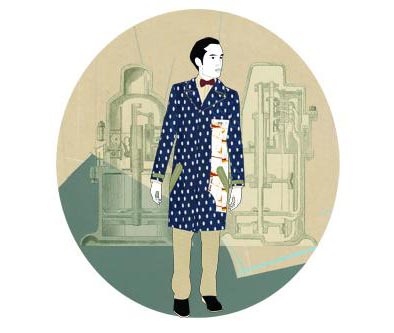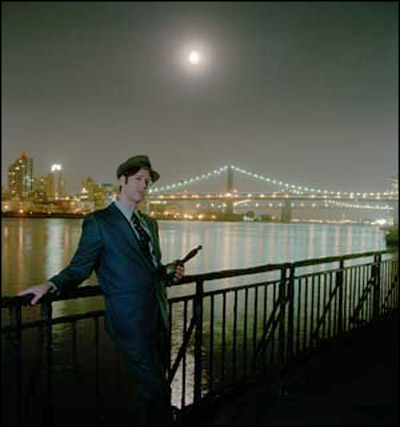
Press photo courtesy of The Syndicate of Human Image Traffickers.
Longtime Coilhouse friend and contributor, Jeff Wengrofsky, was recently interviewed for a prestigious podcast series– Long Story Short, presented by Tablet magazine (a recent winner of the National Magazine Award). Two other two guests in the series are eminent writers Vivian Gornkick and Morris Dickstein.
The conversation topic: how punk rock relates to Jewish history. Jeff has been a footnote to the NYC punk scene since 1982. In the podcast, he puzzles about how Jews have made significant contributions to punk, but the same could be said for their involvement in DaDa, feminism, socialism/communism/anarchism/unionism, The New Left, ecology, and the civil rights movement.
Jeff –who has one of the most astounding original issue vinyl collections of punk on the planet– invited podcast host Liel Leibovitz into his Art Deco lair on the Lower East Side for a fascinating conversation. From Tablet’s writeup:
“…in the 1970s, a very different sort of Jewish artist emerged. Joey Ramone, Handsome Dick Manitoba, Sylvain Sylvain and the other founding fathers of punk rock were as disdainful of the culture as their predecessors were eager to help define it. Wearing leather jackets, singing about sex and drugs, and cultivating their status as rejects, they made music that was loud and fast and much more true to the traditional status of Jews as eternal outsiders. touching on how many young, disenfranchised folks of Jewish descent “the other founding fathers of punk rock were as disdainful of the culture as their predecessors were eager to help define it. Wearing leather jackets, singing about sex and drugs, and cultivating their status as rejects, they made music that was loud and fast and much more true to the traditional status of Jews as eternal outsiders.”
Listen here.

As the Director of the Syndicate of Human Image Traffickers, Jeff has been making a series of films at the intersection of art and life. Several of them have appeared on the Coilhouse website. The sixth film in the series, “The Party in Taylor Mead’s Kitchen,” is an Official Selection of DOC NYC 2011, the documentary film festival of the Independent Film Channel. After reading Jack Kerouac’s On the Road, Taylor Mead, the scion of Michigan’s Democratic Party political boss Harry Mead, left his
Grosse Point home and Merrill Lynch sinecure for a life hitchhiking around the US. Upon arriving in San Francisco, his ability to write and perform clever, bawdy, homoerotic poems made Taylor an instant hit with the Beatnik scene. He soon came to personify the “Beatnik” ethic in Ron Rice’s classic film, The Flower Thief, in 1960. After meeting Allen Ginsberg at a poetry function, Taylor moved to the Lower East Side of New York, then the Beatnik capital of the world. Taylor was soon a Warhol superstar and came to be featured, most famously, in Tarzan and Jane Revisited…Sort of, and most notoriously, as the star of Taylor Mead’s Ass in 1964. He has since acted in over a hundred films, has acted for the stage, and has published books of poetry.
Fifty-one years after trading in upper-crust luxury for bohemian art stardom, The Party in Taylor Mead’s Kitchen finds Taylor still living the life of poetry, painting, partying, acting, homo-eroticism, gossip, modest living, and indifference to bourgeois notions of hygiene. We visit the octogenarian in his Lower East Side grotto to find him still brilliant, boyishly cute, and ready to party at noon. The film depicts the romantic beauty and squalid dereliction of the bohemian life while dishing the dirt on Andy Warhol, Jack Kerouac, Ron Rice, Woody Allen, and Tallulah Bankhead. At 85, Taylor Mead is an ambassador of bohemianism from a world without the internet, cable television, surveillance cameras, cell phones, global positioning systems, credit cards or roach spray.

As this film is short, it has been paired with a longer film that also deals with New York City artists of a bygone era: Girl with the Black Balloons.
They will be shown as a double-feature at these times and dates and locations:
- 7:30 PM, Sun. Nov. 6, 2011 – NYU’s Kimmel Ctr. 4th Floor (Eisner Auditorium) – Buy Tickets
- 3:45 PM, Mon. Nov. 7, 2011 – IFC Center – Buy Tickets



